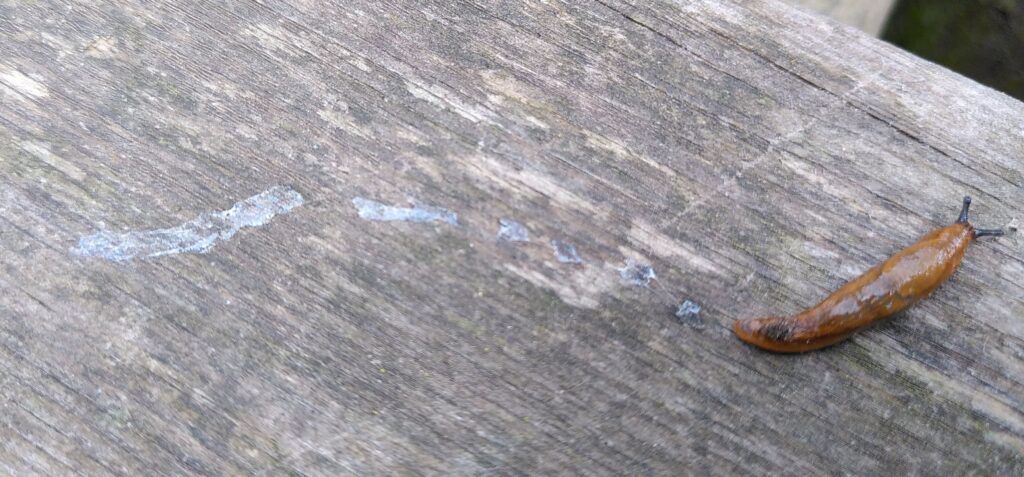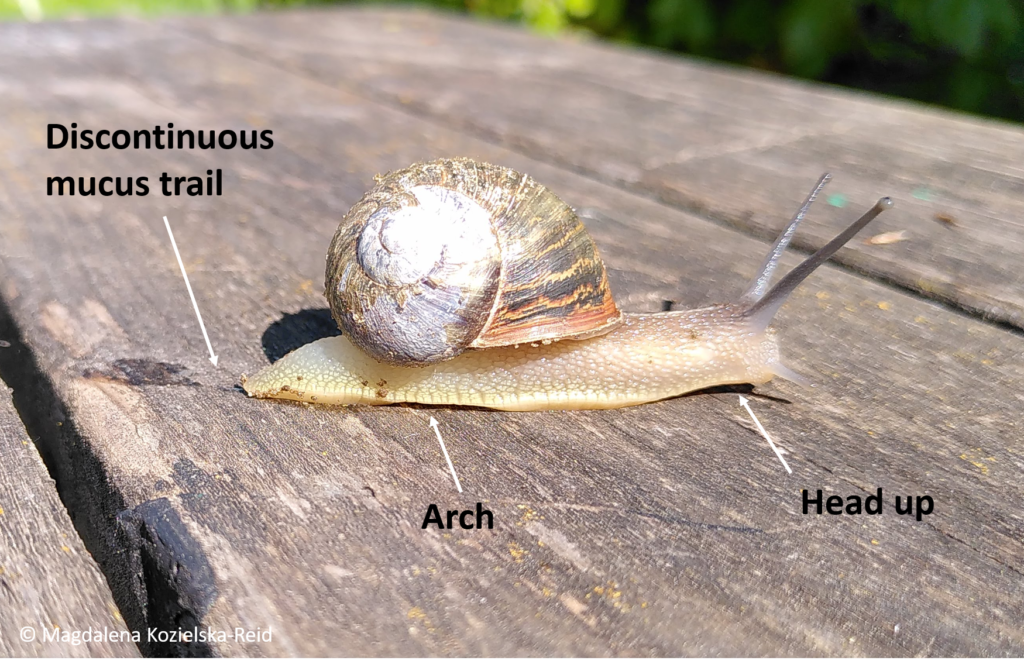I often battle slugs and snails, because they eat the vegetables in my garden. However, recently I decided to take a closer look at them, especially the way they move. I have read that land snails have two basic gaits – adhesive crawling and loping. I decided to check that with my own eyes, which resulted in the photos and videos in this entry (taken with a phone so excuse the quality).
Land slugs and snails move by contracting the muscles in their foot. But contractions alone are not enough. They also need mucus, which acts partly as a lubricant – aiding sliding – and partly as glue – to stick to the ground so that the snail doesn’t slide backwards*.
On smooth, non-absorbent surfaces such as glass or plastic, snails practically always move by adhesive crawling – their entire foot sticks to the ground, and after passing, the trail of mucus is continuous.
When a snail/slug moves on a rough, absorbent surface (wood, bricks, concrete) it often lopes. It regularly lifts its head up and then lowers it back to the ground. As a result, the foot forms arches and only partly adheres to the ground. The position of each arch relative to the ground is constant and it looks a bit as though the snail is sliding on an invisible bridge. This type of gait causes the mucous trail to have breaks in it.
Snails generally move more slowly over rougher surfaces, with approximately the same speed for both gaits. Research suggests that loping is a way to save mucus when crawling on such surfaces.

Much of the research on the movement of snails has concerned the crawling gait, because the experiments were conducted on smooth surfaces – glass and plastic that allow observation of the snail from below. Therefore, it is not certain whether all land snails and slugs can lope. However, the snails that have been specifically tested could.
I decided to check the gait of snails and slugs in my garden. I found various species and watched them on different surfaces. I observed mostly adhesive crawling on glass and loping on wood. So, my observations were in line with expectations. Unfortunately, I also saw great grey slugs on the floor in my house – on laminate flooring they moved using adhesive crawling. On concrete and old metal, I often saw slugs and snails raising their heads, but I was unable to clearly identify the foot arches, and the trace of mucus was not clearly visible. More research is needed …
I encourage you to observe slugs and snails moving on various surfaces. You will surely find different species in your garden, or a nearby park, forest or meadow. I am curious what you’ll see and I invite you to share your observations in the comments section below this post.

* Snails’ mucus is a non-Newtonian fluid – under low stress it is very sticky and helps the snail adhere to surfaces. Under stress (caused for example, by contractions in sections of the snail’s foot), the mucus liquifies, allowing the slug to slide.
You can find more of my snail and slug videos here.
Polską wersję tego wpisu możesz znaleźć tutaj.

